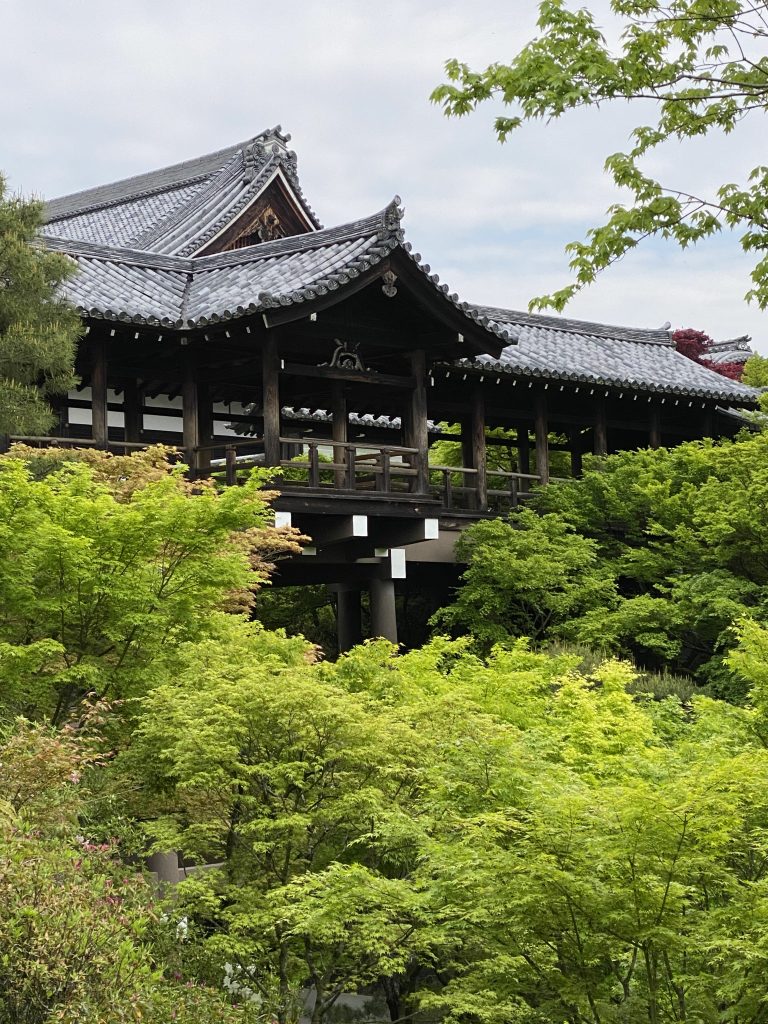
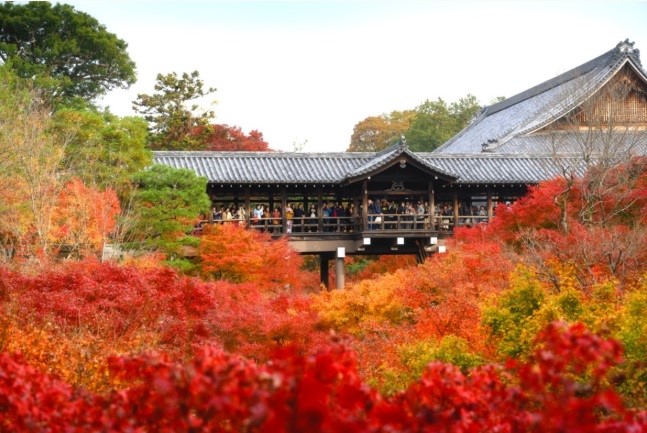
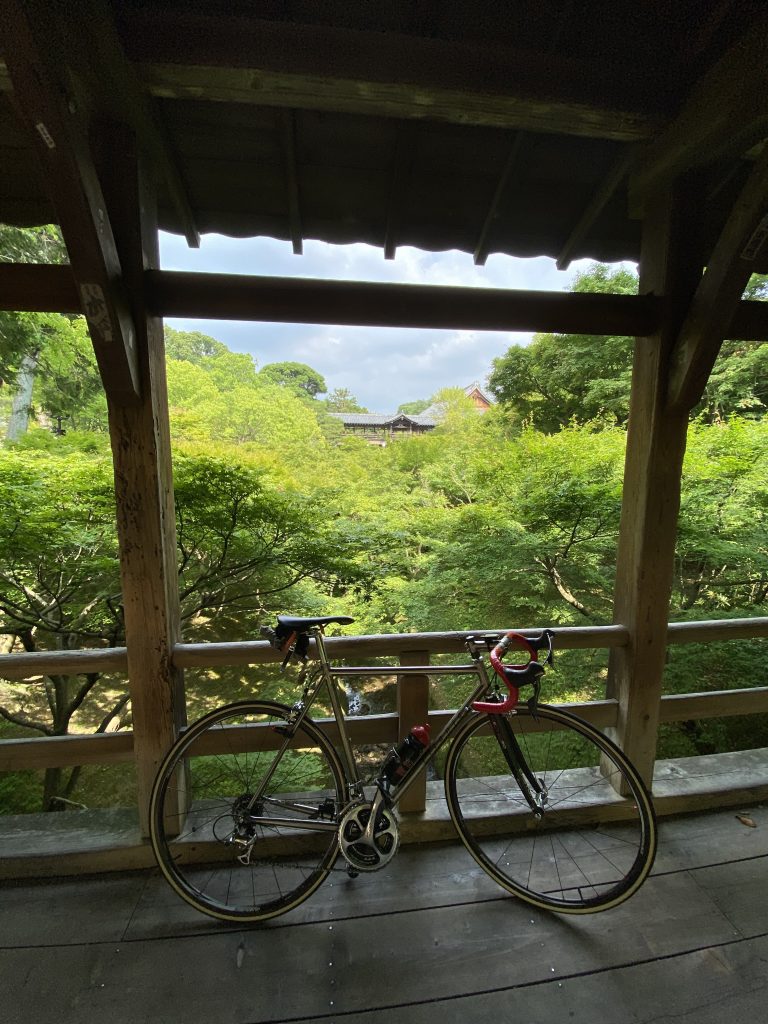
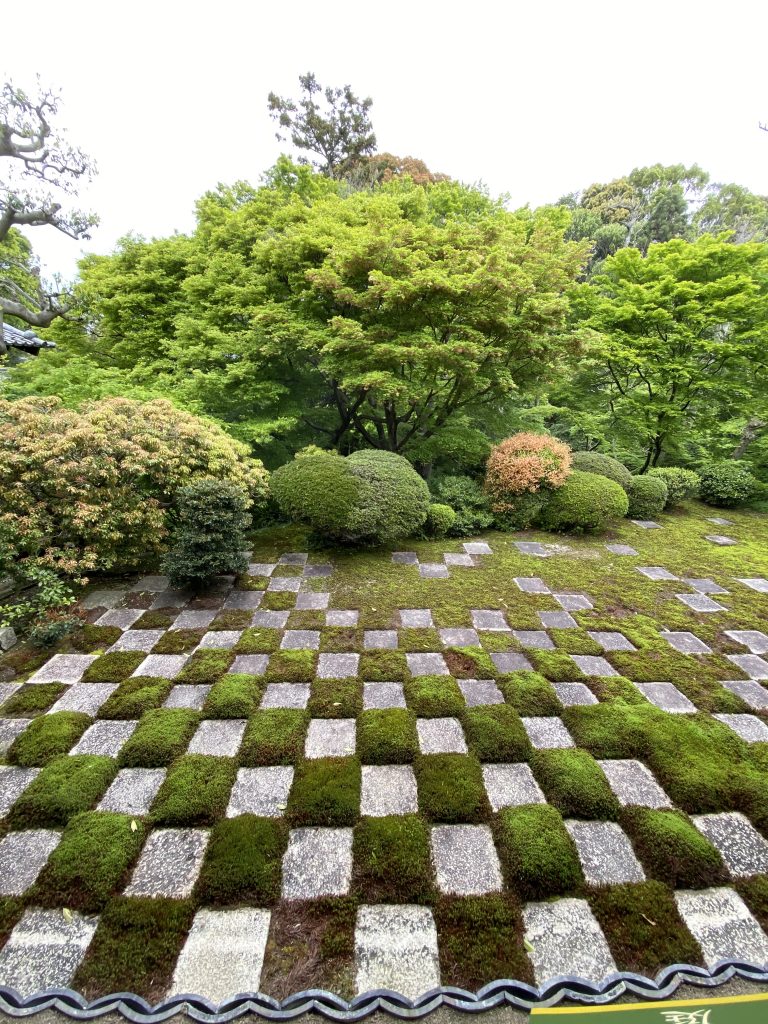
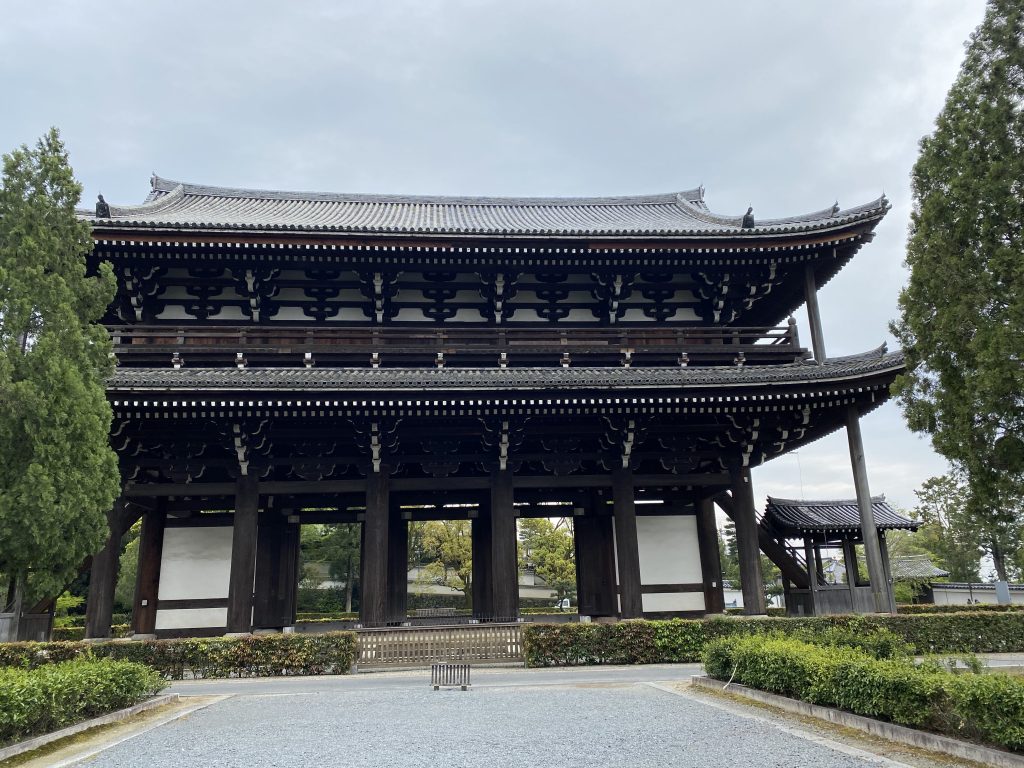
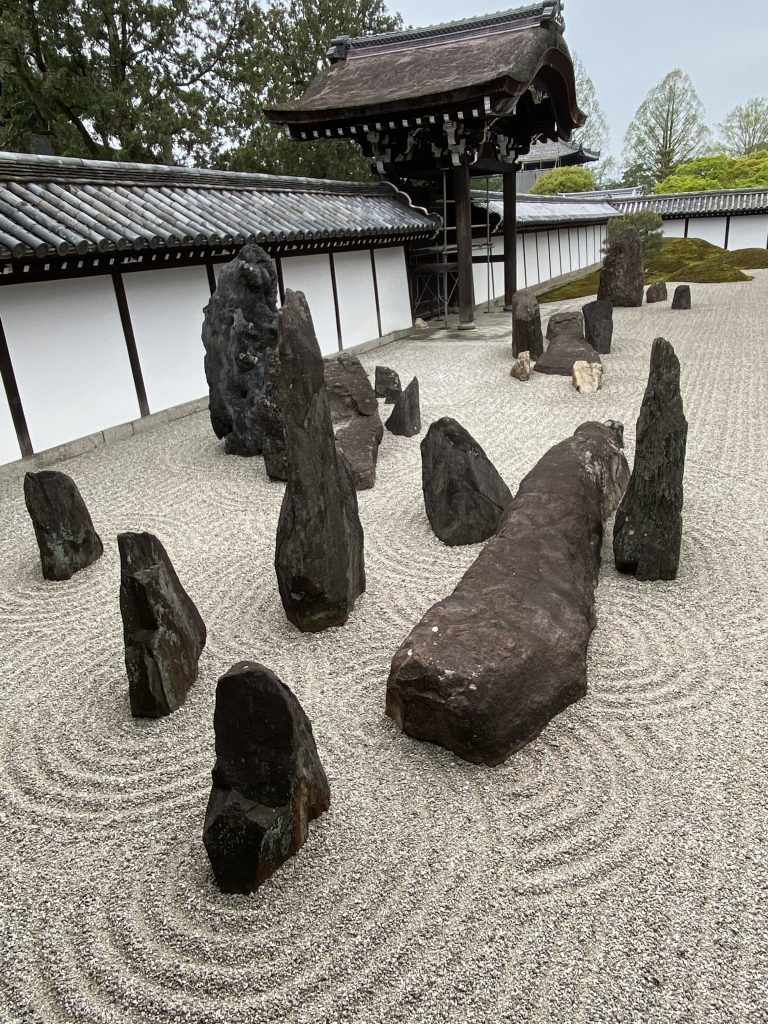
Tofukuji temple was founded as a Zen Buddhist temple in 1236 by Kujo Michiie, the great statesman.
Its name, To–fuku-ji, is a combination of the names from two great temples in Nara, To-dai-ji and Ko-fuku-ji respectively.
On the grounds, there are many huge various wooden buildings such as San-mon gate, main hall, Hojo, and so on.
In addition to those buildings, there are three wooden bridges with a roof crossing over Sengyokukan valley.
From the lowest, these names are Gaun-kyo bridge, Tsuuten-kyo bridge, and Engetsu-kyo bridge. The image of the alignment of these bridges means going through clouds(Gaun), going over the sky(Tsuuten), and reaching the moon(Engetsu).
Sengyokukan valley which was created by the movement of the San-no-hashi-gawa river is filled with bountiful maple leaves.
Surprisingly, there are no cherry trees on the grounds because the priest named Myochin asked the Shogun Ashikaga Yoshimochi around 1400 to remove all cherry trees in order not to distract Zen practitioners. After that, Tofukuji’s maple foliage became more popular with people as fresh green maple leaves in spring and colorful foliage in autumn.
At the peak of autumn foliage(Nov. to early Dec.), lots of people come to enjoy it.
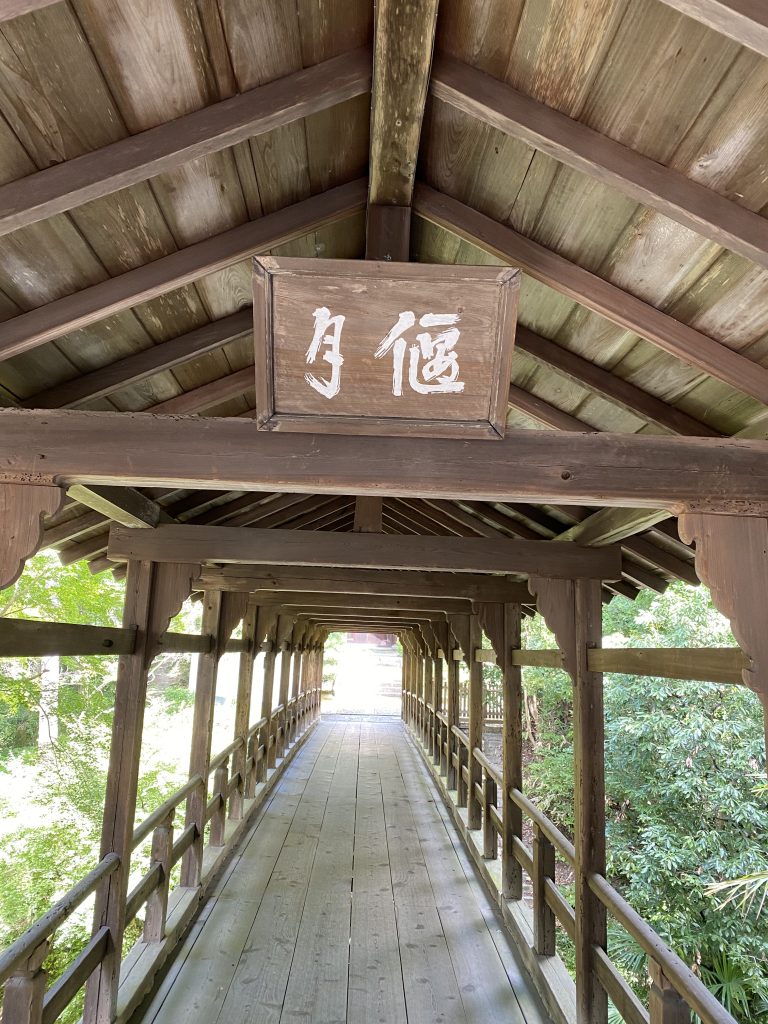
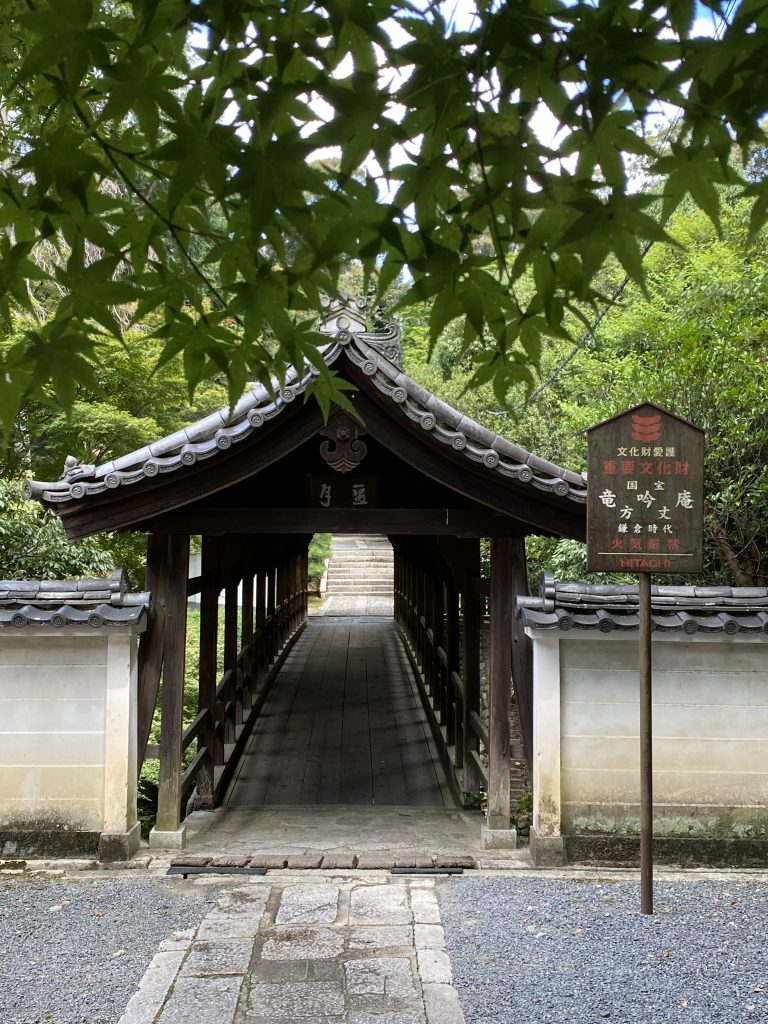
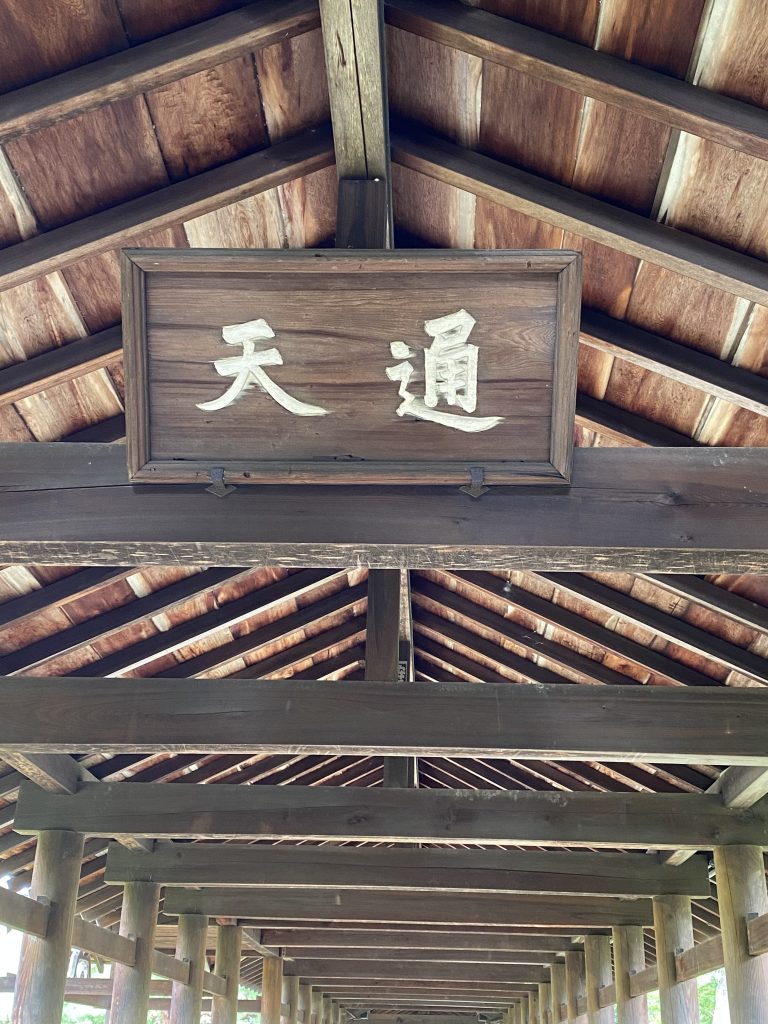
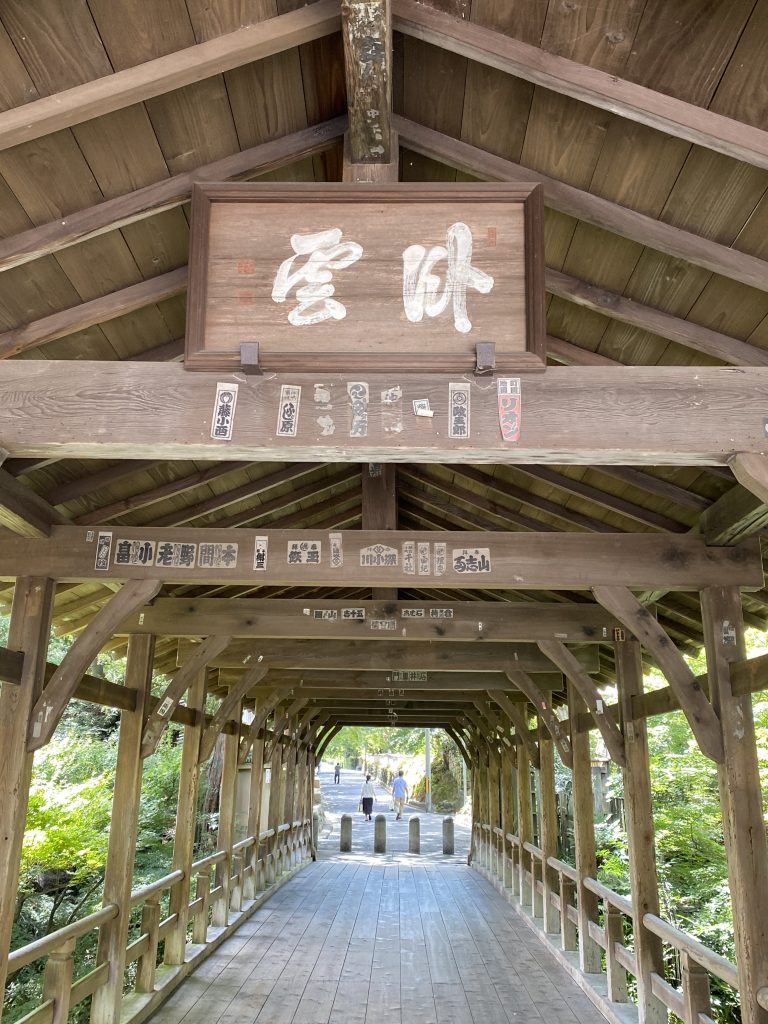
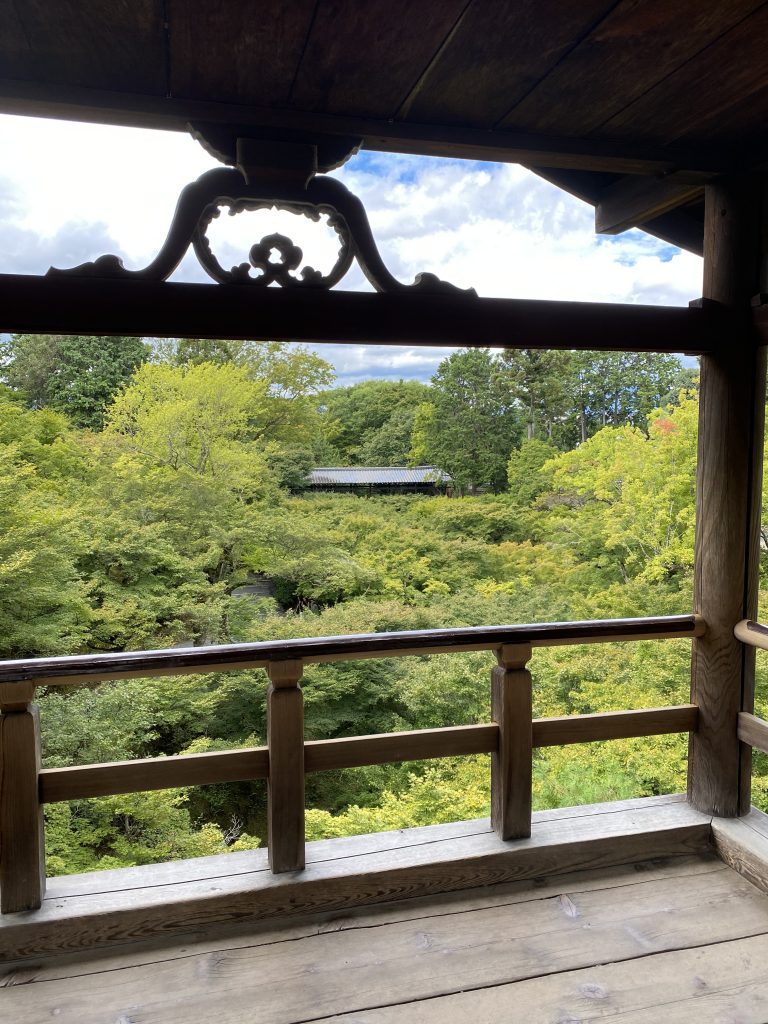
Scenery from the Tsuuten kyo bridge.
